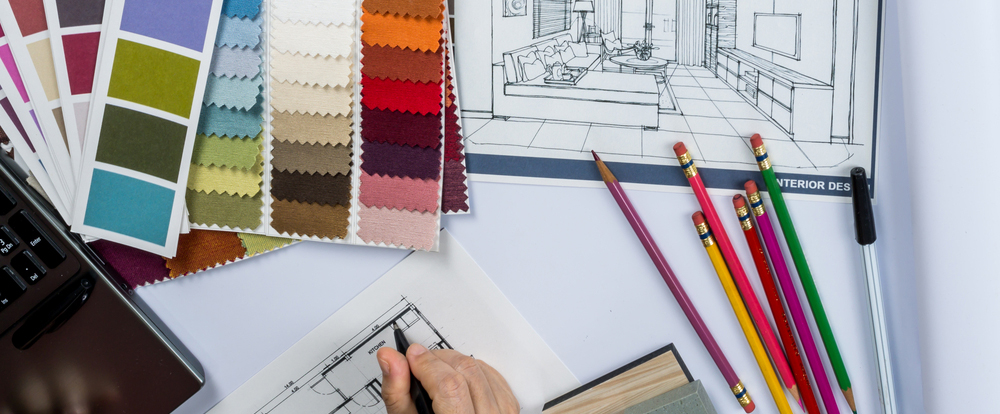Exploring the Diverse Spectrum of London Interior Architects’ Design Mastery
In the dynamic landscape of London’s architectural prowess, Interior Design Architects stand out as visionaries who shape not only homes but also redefine hospitality spaces. Their versatility is a testament to their ability to seamlessly transition from crafting residential sanctuaries to curating the ambience of hotels, restaurants, and other hospitality venues. This article delves into the multifaceted world of London Interior Design Architects, unravelling the threads that weave residential and hospitality designs into an unparalleled tapestry.
1. Setting the Stage: Residential Brilliance
London’s residential spaces are canvases for Interior Design Architects to showcase their ingenuity. From chic apartments in Kensington to historic townhouses in Chelsea, these designers transform living spaces into reflections of their inhabitants’ lifestyles.
1.1 Tailoring Homes to Individuals
London Interior Design Architects take a bespoke approach, ensuring that each residential project is a unique expression of the client’s personality. They meticulously blend functionality with aesthetics, creating homes that go beyond mere structures to become extensions of the occupants’ identities.

1.2 Innovations in Spatial Design
Residential projects often require ingenious spatial solutions. London Interior Design Architects masterfully navigate limited square footage, crafting multifunctional spaces that maximise utility without compromising on style. From hidden storage solutions to transformative furniture designs, every element is carefully considered.
1.3 Balancing Tradition and Modernity
London’s rich architectural history provides a backdrop for Interior Design Architects to infuse a sense of tradition into contemporary designs. Whether restoring a Georgian home or adding a modern extension to a Victorian property, the seamless integration of the old and new is a hallmark of their craft.
2. The Grand Transition: Adapting to Hospitality Spaces
Beyond residential projects, London Interior Design Architects exhibit remarkable adaptability when venturing into the realm of hospitality design. Hotels, restaurants, and bars become their new canvases, where they reimagine spaces to create immersive and memorable guest experiences.
2.1 Designing for Guest Comfort
In hospitality, comfort is paramount. London Interior Design Architects master the art of creating inviting atmospheres that make guests feel at home. From the layout of hotel suites to the selection of furnishings in a restaurant, every detail is crafted to enhance the overall guest experience.
2.2 Navigating Brand Identities
Each hospitality project brings forth the challenge of encapsulating the brand identity. Interior Design Architects in London work closely with proprietors to translate brand narratives into tangible design elements. The ambience of a luxury hotel differs significantly from that of a trendy urban eatery, showcasing the designers’ ability to adapt their aesthetic language.
2.3 Functional Aesthetics in Public Spaces
Public spaces within hospitality venues demand a delicate balance between functionality and aesthetics. London Interior Design Architects create communal areas that are not only visually appealing but also conducive to social interaction. Whether it’s the lobby of a boutique hotel or the lounge area in a restaurant, the design encourages engagement while maintaining an elegant allure.
3. Case Studies: Exemplifying Versatility
To truly appreciate the versatility of London Interior Design Architects, let’s explore two distinctive case studies that highlight their seamless transition between residential and hospitality projects.
3.1 Residential Marvel: Contemporary Elegance in Hampstead
Project Overview:
In a modern residence nestled in the leafy suburb of Hampstead, London Interior Design Architects undertook the challenge of creating a luxurious yet comfortable family home. The emphasis was on integrating contemporary design elements while preserving the warmth of a family abode.
Design Approach:
The architects utilised an open-plan layout to enhance the sense of space, combining sleek lines with plush furnishings. Neutral tones were complemented by pops of colour, creating an inviting ambience. Innovative storage solutions were incorporated to maintain a clutter-free environment.
3.2 Hospitality Gem: Urban Oasis in Shoreditch
Project Overview:
Venturing into the heart of Shoreditch, a vibrant district known for its artistic flair, Interior Design Architects took on the design of a boutique hotel. The objective was to infuse the hotel with the neighbourhood’s creative energy while offering a serene retreat for guests.
Design Approach:
Drawing inspiration from Shoreditch’s street art scene, the interiors showcased bespoke artworks and graffiti-style murals. Guest rooms were designed as havens of tranquillity, featuring locally sourced materials and custom furnishings. The hotel’s communal spaces embraced an eclectic aesthetic, encouraging social interaction among guests.

4. The Collaborative Process: Engaging Clients and Industry Professionals
The success of Interior Architectural projects, whether residential or hospitality-focused, hinges on effective collaboration. London Interior Design Architects actively engage with clients, understand their aspirations, and translate them into design concepts. Collaboration extends to working seamlessly with builders, craftsmen, and other industry professionals to bring the vision to life.
5. Future Trends: Shaping Tomorrow’s Spaces
As London evolves, so do the trends in Interior Architecture. The future holds exciting possibilities, with a growing emphasis on sustainable design, technological integration, and the fusion of cultural influences. London Interior Design Architects are poised to lead the way, crafting spaces that not only meet the current needs but also anticipate the demands of tomorrow.
6. Conclusion: The Ever-Adaptable Artisans of Space
In the realm of architecture and design, London Interior Design Architects emerge as the ever-adaptable artisans, seamlessly transitioning between residential and hospitality projects. Their versatility lies not only in their ability to craft visually stunning spaces but also in their capacity to evoke emotions, tell stories, and create environments that transcend the ordinary. As London continues to redefine itself, these architects remain at the forefront, shaping the very essence of the city’s interior landscapes.





